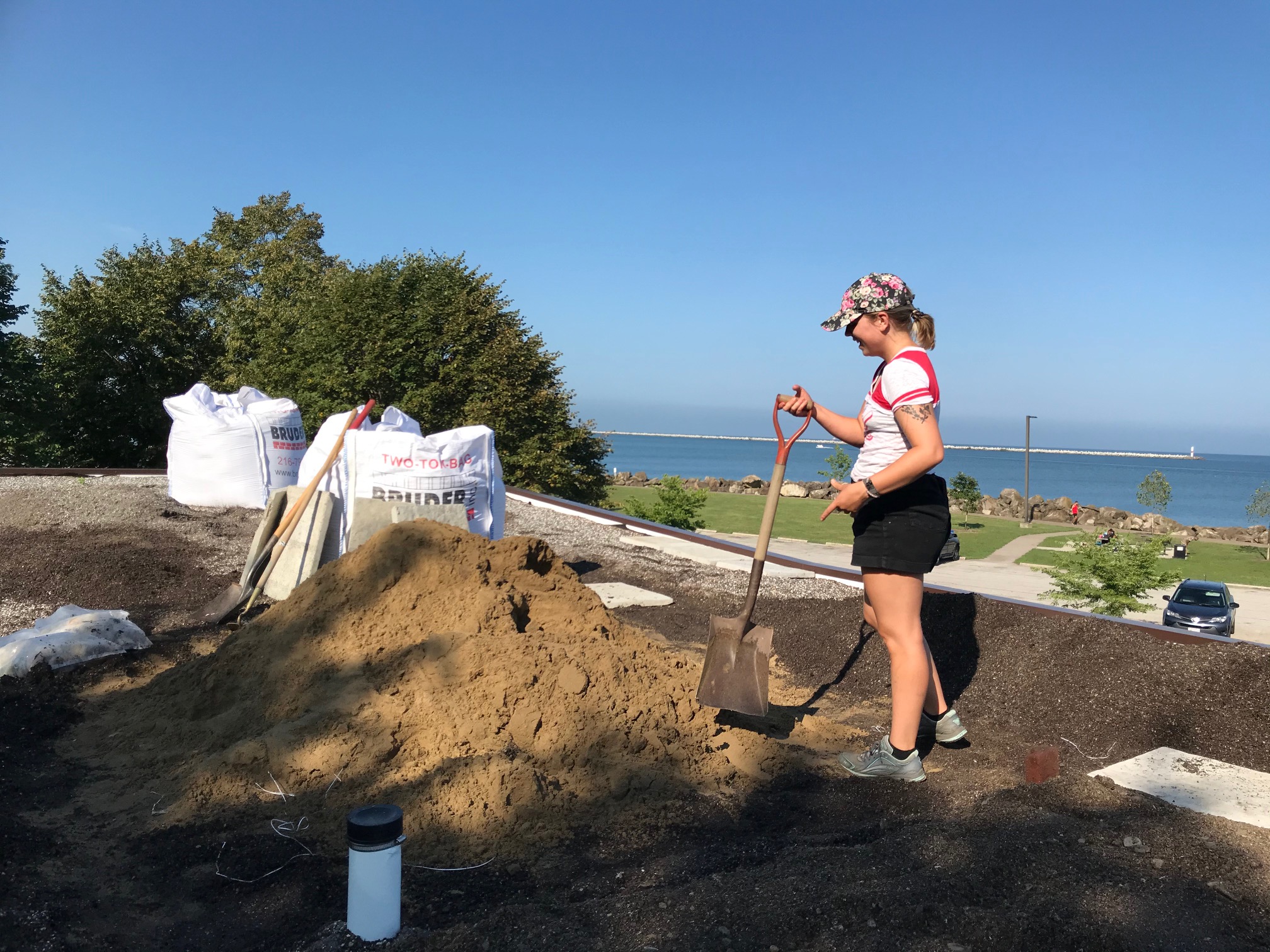2018 Seed Grant Recipients
Investigators: Dr. Reid Coffman (College of Architecture and Environmental Design) and Dr. Christie Bahlai (College of Arts and Sciences).

This project provides insight into the effectiveness of the urban conservation practice of living architecture to provide beneficial habitat to plants and invertebrates by quantifying ecosystem service support within these habitat patches. The team combines the fields of architecture and biology to examine how ecosystem services can be improved in the conceptualization and execution of designed ecosystems. Specifically, this project investigates vegetative roof invertebrate community, estimate insect mediated ecosystem service provision, and advance a current design decision-making tool used in conceptualizing roofs that prioritize habitat. This study will lead to future investigations that examine how living architecture can be designed to deliver ecological services and the creation of a habitat roof typology.
Native habitat decline and destruction continue as a part of the Anthropocene, yet conservation land planning can be used to improve ecosystem resilience and buffer against biodiversity service loss in urbanizing locations. In preexisting urban settings where land area is limited, vegetative roofs, the growth of plants on rooftops for ecological services, offer an alternative form of habitat to on-grade ecosystems. Although imperfect replacements for natural habitat (Coffman and Davis, Williams et al 2014) these hybrid ecosystems possess the capacity to offer a range of partial habitat value and related ecosystem services. Approaches to establishing and maintaining vegetative roofs can be optimized to select the desired ‘ecosystem service bundles’ (sensu Raudsepp-Hearne 2010). For example, vegetative roofs may be designed to be regionally contextual and mimic nearby natural habitat, such as rock cliffs, rock outcroppings or gravel bars (Dvorak and Volder 2010; Lundholm 2006). Alternatively, roofs may be designed to deliver biological source material for the surrounding terrestrial condition, such as forest floor regeneration (Coffman et al 2014). Finally, a roof may be designed with highly disturbed on-site urban soils enabling spontaneous ruderal plants as reconciled habitat for insects and birds (Gedge 2003; Dunnett 2015).
Using a national template model, Coffman’s lab has been examining the reintroduction of rare Ohio prairie plant species to roof environments in various soil conditions, including the endangered prairie violet (Viola pedatifida) and the extirpated prairie goldenrod (Solidago ptarmicoides). Similarly, Canada’s Biodiverse Green Roof Guidelines (2013) suggest that soils and vegetation selections be informed by alvar ecosystems, which are limestone-based rock prairies. Following these suggestions, Coffman’s work on rare and native plant species could be largely expanded through understanding Cleveland Metroparks's bedrock meadow remnant ecosystems. Equally, Cleveland Metroparks’s mission to create urban habitat would be better informed through discoveries of how roofs can extend local habitat.
A key challenge in managing ecosystems for biodiversity goals is the lack of generalizable metrics which relate a taxon’s responses to the desired changes in biodiversity-related functions. With a focus on two key arthropod-mediated ecosystem services, pollination and biological control of pests, Bahlai develops assessment strategies for biodiversity responses in land-use and land management decision-making. She developed the “Natural Enemy Unit,” a metric to quantify the net biological control potential of a natural enemy community within a habitat patch, and used it to assess the impact of management actions and make management recommendations (Bahlai et al 2010, 2013a, Hallett et al 2014). She later applied this concept to assessing community responses to anthropogenic disturbances, including invasions (Bahlai et al 2013b), and has conducted additional work assessing diversity responses to habitat manipulations in anthropogenic landscapes including in agricultural settings (Bahlai et al 2015, Fox et al 2016), invaded prairies and grasslands (Carson et al 2014, 2016), and in forest and woodland sites undergoing restoration (Lettow et al 2014, 2018).

Using contemporary design and fabrication methods, supporting faculty member Greg Stroh has utilized a recombinant approach to design with particular emphasis on the scalar and spatial relationships within the physical realm. His recent work attempts to transform social-cultural-environmental conditions through a material object with an unexpected collection of functionality. Stroh’s work will advance the Team Tool’s approach of combining human-oriented services with biological diversity. This study enables Stroh to expand his speculative work into venues combining wildlife habitat, and other ecological services, with human performance and aesthetics in building structures. Possessing the vision of being a national leader in sustainable green infrastructure, Cleveland Metroparks has installed two vegetated roofs on new buildings (Edgewater Beach House 1,200 s.f. in 2017 and Watershed Stewardship Center 2,200 s.f. in 2014). Over five years, they plan to install vegetative roofs on a range of smaller independent structures include bike shelters, park pavilions, sheds and out buildings that will allow for greater experimentation. Installing and testing biodiversity goals will help them fulfill their mission of conserving natural resources while enhancing people’s lives. Cleveland Metroparks has committed a wide range of personnel to this project, including field and office personnel.
The team hypothesizes that such compromises, as observed at the Watershed Stewardship Center in Cleveland Metroparks, can be reduced in future projects when ecological and human interests are clarified and designed to be compatible.

